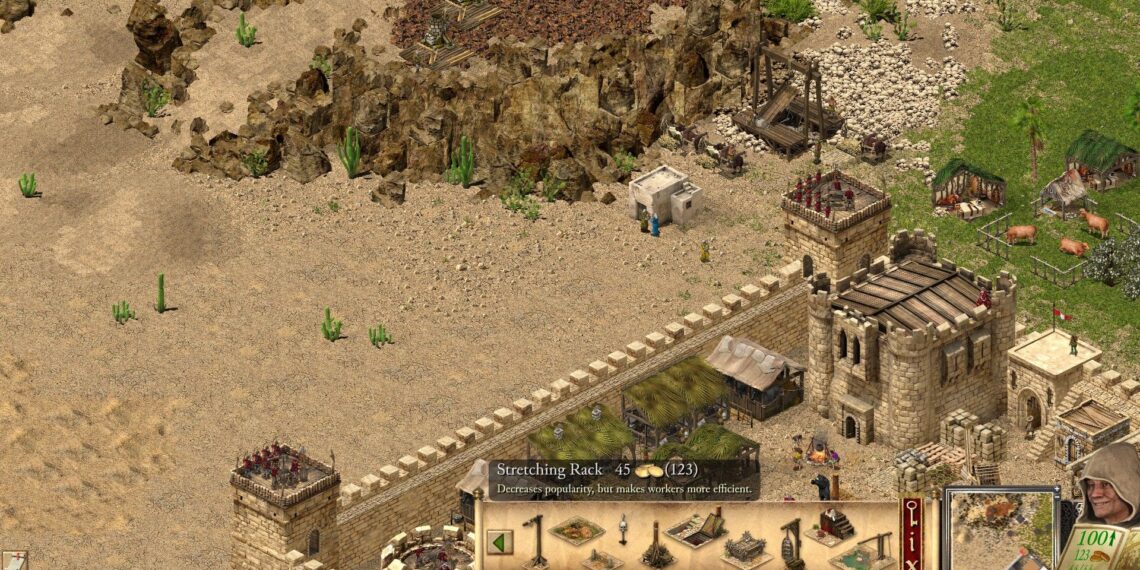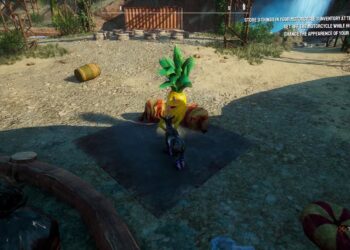Select Language:
In Stronghold Crusader, you can concentrate solely on production and military strength. However, if you want to gain an advantage over opponents, utilizing the Fear Factor mechanism is a smart move. Providing your citizens with the best entertainment available or intimidating them with imaginative medieval punishments can significantly influence your economy and combat effectiveness in surprising ways.
It’s generally advisable to choose one approach and stick with it for the duration of the game. Keep reading to find out everything you need to know about Fear Factor and how to make the right decision.
How to Set Up Fear Factor Buildings
Buildings that affect Fear Factor are divided into categories called Good Things and Bad Things. You can find them in the Town Tab, along with homes and religious structures. Each category has its own submenu: click the flower icon for Good Things and the noose icon for Bad Things.
As you might expect, Good Things will boost your Popularity while Bad Things will lower it. The only exception to this is flags and banners, which are considered Good Things but are purely decorative and don’t impact gameplay.
Effects of Fear Factor
Your Good or Bad Fear Factor level will depend on the number of each type of building you construct:
- Every four Good Things gives you one Good Level.
- Each Bad Thing constructed grants one Bad Level.
Both Levels can reach a maximum of five, meaning that building more than twenty Good Things or five Bad Things is unnecessary. Additionally, Good and Bad Levels offset each other.
You can check your overall Fear Factor level by clicking on one of your soldiers. The boxes above their health bar indicate their combat bonus or penalty, with green boxes representing Good and red boxes representing Bad levels.
Effects of Good Things
For every Good Level, your Popularity increases by one per month, and your soldiers inflict five percent more damage in battle. However, all of your production facilities will operate ten percent slower as workers spend time enjoying gardens or participating in dances.
At a maximum Good Level of five, you will see a five Popularity increase and a twenty-five percent damage boost, but production will be at half speed. With the additional Popularity, you can likely support a larger population and establish more workplaces to counterbalance the slowdown or use the goodwill to raise taxes for increased Gold, purchasing what you need from the Market.
The combat bonus is especially beneficial for already powerful units like Knights, Assassins, and Swordsmen from both factions. The extra Gold from tax increases can also be invested at the Mercenary Post, where you won’t have to focus as much on resource production since Arabian units come with their own equipment.
Effects of Bad Things
For each Bad Level, you’ll lose one Popularity per month, and your soldiers will deliver five percent less damage in combat. However, whenever workers bring in resources they’ve produced, there’s a chance they’ll provide additionalfive percent increase in overall production per Bad Level.
Therefore, at a Bad Level of five, you’ll lose five Popularity monthly and your soldiers will be twenty-five percent less effective, but you’ll receive an average of fifty percent more resources from the same worker count. Use the increased production to ensure enough Inns for your population to offset the loss in Popularity. Do note, however, that the combat penalty will remain until you reduce the use of punitive measures.
For weaker troops like Archers and Spearmen, the combat penalty is less detrimental since they already deal minimal damage. By producing additional spears and bows, you can build a larger army. Focusing on intimidation is thus advantageous for achieving numbers over quality.







